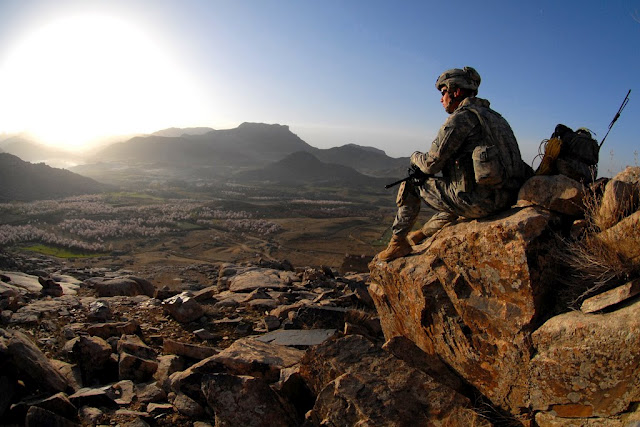Showing posts by Caitlyn L. Antrim.
-
Trillions of Dollars of Minerals? Misusing Geology and Economics to the Detriment of Policy
›Monday’s New York Times article, “U.S. Identifies Vast Mineral Riches in Afghanistan,” triggered a memory of a 70s-era Popular Science magazine cover that screamed “$3 trillion of minerals on the ocean floor!” That article, along with speeches from promoters of deep seabed mining, built up the anticipation that there were windfall profits to be had from the deep seabed. From this gross misuse of geologic speculation came all the difficulties with the negotiations of Part XI of the Law of the Sea Convention — and the United States’ continuing struggle to join the convention.
One of my roles on the U.S. delegation to the Law of the Sea Conference in 1979 and 1980 was to play defense against the misuse of geology and mineral economics in the negotiations, both by countries on the other side of the negotiating table and by seabed mining promoters at home. Part of that task was to gather and accurately “translate” the scientific and economic data from mineral statistics agencies, including the U.S. Bureau of Mines (since incorporated into the U.S. Geological Survey [USGS]), for policymakers and diplomats.
At times I felt like a goalie in the Part XI negotiations, blocking shots being taken by the forwards of the other teams that were promoting seabed mining as an economic bonanza. Unfortunately, by that time, too many groups had a vested interest in portraying the profitability of deep seabed mining and we couldn’t (yet) turn back the clock to a more reasonable approach.
When I read this week’s article in The New York Times, I had the same feeling of policy being manipulated by misuse of geologic data. With some help, I located the original DOD powerpoint presentation. The differences illustrate how science and economics can be misused to cause extensive damage in the policy process—a lesson I learned from the Law of the Sea negotiations.
The New York Times left out two important items from the DOD graphic accompanying the article:
First, the word “undiscovered” was left out; the original phrase reads “known and estimated ‘undiscovered’ resources anticipated by USGS and AGS and using prices as of 12/09.” Not only does that hide the important fact that the resources cited have not yet been discovered, it obscures that the estimates are largely defined by the USGS as either “hypothetical” and “speculative” resources — not the kind of numbers on which to stake a strategy for war and peace.
Second, the article omitted a caveat from DOD’s original powerpoint slide: “USGS agrees with the assertion: ‘At least 70 percent of Afghanistan’s mineral resources are yet to be identified.’”
Therefore, less than 30 percent of DOD’s estimated value is based on tangible evidence of deposits and 70 percent of the estimate is based on hypothetical or speculative resources of uncertain grade and abundance.
The value depends not just on metal content but also on the type of mineral, the grade (percent metal content) in the deposit, the size of the deposit, the distance from fuel and power, the amount of earth that covers the deposit, among other factors. If this report had geological merit as a USGS report, it would have said how much ore was in place at what grade.
Assigning a value to as yet undiscovered deposits is an effective way to influence a policymaker in a powerpoint presentation or generate a headline story from a reporter who has no experience with the terms of art used by geologists. But it has little to do with reality.
So, I drafted these points in response to the story in The New York Times:- According to the USGS, at least 70 percent of Afghanistan’s mineral wealth as estimated by the DOD is hypothetical or speculative, based on geologic theories, not measurement.
- The value estimates are grossly exaggerated by including sub-economic resources because they fail to consider capital and operating costs of recovery and processing to recover ore and convert it to finished metal.
- The DOD assessment fails to note whether the known or hypothetical deposits in Afghanistan are capable of competing economically with known and hypothetical deposits elsewhere in the world.
- Seventy-six percent of the estimated value comes from iron and copper, both of which are already found and produced in many locations around the world in commercially viable mines.
- The DOD values fail to distinguish between economically viable deposits and those that cannot be profitable in the foreseeable future, or to note those that are entirely speculative.
- The headline value of nearly $1 trillion is grossly in error and misinforms policymakers as to the economic potential of mineral deposits in Afghanistan.
Caitlyn L. Antrim is the executive director of the Rule of Law Committee for the Oceans. This article originally appeared in The Ocean Law Daily. To subscribe, please email caitlyn@oceanlaw.org.
Read more on Afghanistan’s mineral wealth and transparency initiatives on The New Security Beat.
Photo Credit: “Sunrise in Afghanistan,” courtesy of flickr user The U.S. Army.





